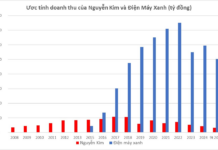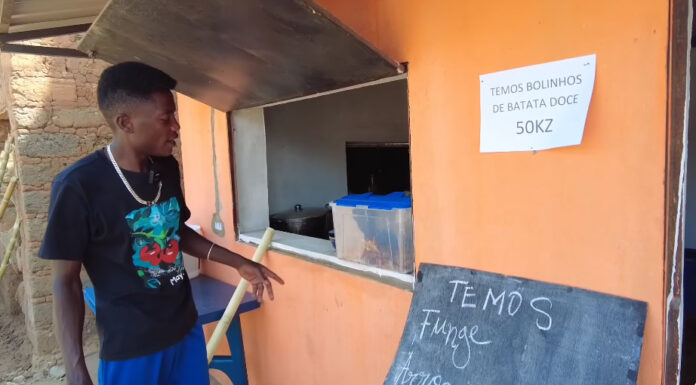Vietnamese Sweet Potato Cakes Take Africa by Storm
Lindo, a well-known Angolan personality among those who follow the lives of people in Africa, has recently started a small food stall with his wife at a local market. In addition to selling rice and sugar cane juice, a popular Vietnamese drink, Lindo has now added a new item to his menu: Vietnamese sweet potato cakes.
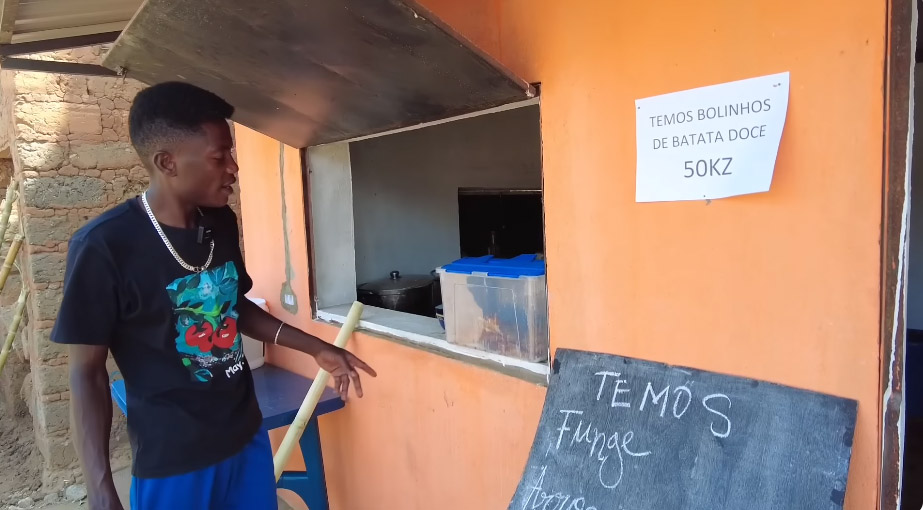
Lindo selling sweet potato cakes from his kiosk. The cakes are placed in a glass display case.

The Vietnamese sweet potato cakes are a huge hit.
These cakes are not only delicious but also easy to make. All you need are sweet potatoes and flour. The potatoes are peeled, grated, and mixed with a flour batter. The mixture is then fried in a pan, forming small, round cakes. The result is a crispy, golden treat that is perfect for snacking.
Lindo learned how to make these cakes from his Vietnamese friends. Before adding them to his menu, he practiced making them and offered them to the villagers, who loved them. Lindo and his wife now sell the cakes from their kiosk, along with a sign announcing the new item.
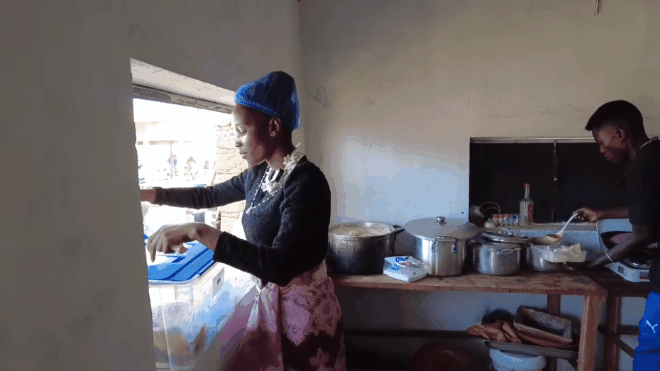
The cakes sell out quickly, and Lindo has to ask customers to come back the next day.

Lindo continues to sell sugar cane juice alongside the cakes.
The price of these cakes is a pleasant surprise, at only 50 kwanza each (less than 1.5 US cents). In Vietnam, similar cakes are sold for 5,000 to 10,000 Vietnamese dong (20-40 US cents) each.
Lindo’s stall has been attracting many customers, and he is careful to wear gloves when handling the cakes. Each cake is carefully wrapped in paper and then placed in a plastic bag. In no time, the cakes are all sold out, and Lindo has to turn away customers, promising to have more cakes available the next day.
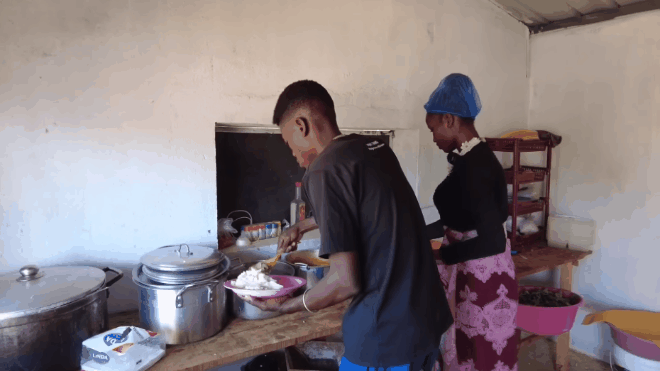
Lindo and his wife are busy serving customers at their stall.

Lindo is known for his friendly and attentive service.
The Food Stall Gains Popularity
In addition to the sweet potato cakes and sugar cane juice, Lindo offers a variety of rice dishes, including cornmeal porridge, beef with onions, chicken with chili and lemongrass, beans, and stir-fried vegetables. The menu changes daily, and a meal costs between 400 and 500 kwanza (approximately $1.10 to $1.40).
Lindo’s stall is clean and well-organized. He and his wife make sure to clean the plates and trays before serving food to customers. For those who want to take their food home, they provide plastic trays, which are returned after the meal.
The stall has been attracting a steady stream of customers, and Lindo and his wife are kept busy. Despite the rush, they always greet customers with a smile and are happy to explain the dishes on offer. The stall is well-equipped with tables, chairs, napkins, spoons, forks, and chili sauce for those who like their food spicy.
Many people are happy to see Lindo’s success, as he has gone from struggling to becoming a small business owner. It is hoped that his food stall will continue to thrive and that he will be able to introduce even more Vietnamese dishes to the people of Angola.
Source: Lindo Vlogs – Life in Africa
The Winning Formula: Lindo’s Success Secrets in Angola
Lindo’s eatery is a bustling hub, a vibrant destination for food enthusiasts. With a constant stream of patrons, the restaurant buzzes with energy as it offers a unique dining experience. The lunch rush is a frenzy, with patrons flocking to secure a taste of their culinary delights. It’s a race against time as the restaurant often sells out within a few hours, leaving patrons craving more.













